
How to Do Route 66
Route 66 , fondly called "The Mother Road", crosses three time zones, starting in Chicago, Illinois and descending along the Santa Monica Pier in Los Angeles, California. A trip down Route 66 takes you back to the days when many families drove across the country in the 1930s to feed their families and pursue their dreams. Since then, the Road has become the very essence of the American spirit . A road that cuts through the heart of the country, Route 66 tells the quintessential American story of freedom, mobility and exploration . It's a road trip that celebrates the heritage and tenacity of the American people.
A trip on Route 66 is like learning the history of the American people : from the birth of the country many years ago to how it appears today. Here's everything you need to know if you're planning a trip on Route 66 .
Facts about Route 66
- Length of route : 3,940 km.
- Duration : Approximately 30 hours of driving (without stops) to cover the entire journey.
- Number of states covered : 8 states (California, Arizona, New Mexico, Texas, Oklahoma, Kansas, Missouri and Illinois).
- Duration of the journey to be covered : With rest stops, approximately 2 weeks.
- Departure City/State : Chicago, Illinois.
- Ending City/State : Los Angeles, California.
- Accommodation : Hotels, campers and hostels located along the route.
History of Route 66
Created in 1926 , Route 66 was the first transcontinental highway of its kind. The unique architecture of a highway that ran diagonally across the country became the pulse of America.
Route 66 became a sought-after route for the trucking industry and for many families who migrated west during the Great Depression. Perhaps more importantly, it served as the main route for those traveling West to rebuild during the Dust Bowl of the 1930s, which greatly damaged the ecology and agriculture of many American communities.
As the route became more popular, Route 66 became a place of economic stability for families who settled along the secondary roads. In the years since, it has become the lifeblood and “ road of dreams ” for many Americans. To know the history of Route 66 in depth, we refer you to our article on how Route 66 became a legend .
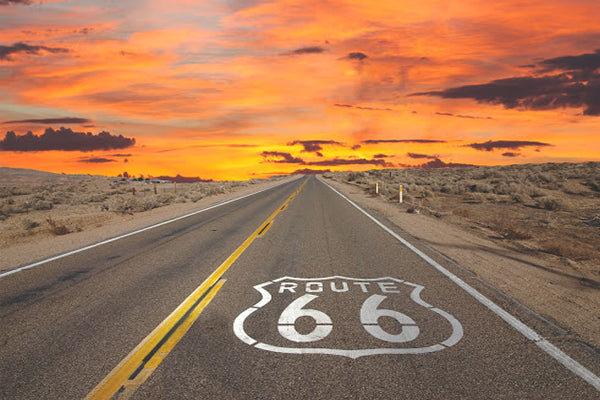
Route 66: an ideal route
Explore Route 66 and America's Heart in two weeks , where it will take you from the heart of Chicago to California's sparkling West Coast. Along the way, discover the places that have stood the test of time and represent the very soul of America.

Day 1: Chicago, Illinois to Springfield, Illinois
This is where it all begins . The Mother Road begins either on Jackson Boulevard at Michigan Avenue (the original 1926 starting point) or alternatively on Jackson Boulevard at Lake Shore Drive (since 1933). Head to Lou Mitchell's (serving since 1949) for lunch and the perfect start on Route 66. ☕
From Chicago , Route 66 heads southwest to Pontiac, where the Route 66 Hall of Fame is located and you can take a break at the historic Swinging Foot Bridges . Continue to Lincoln, named after the famous president, where you can explore many sites, including where President Lincoln practiced law, the Lincoln Heritage Museum , and a giant statue of the president himself. Finally, end your first day in Springfield with dinner at the Cozy Dog Drive-In. Learn more about the 1908 race riots by visiting the restored Mahan Gas Station, originally dating from the 1920s. ⛽
- Major attraction : Lou Mitchell's
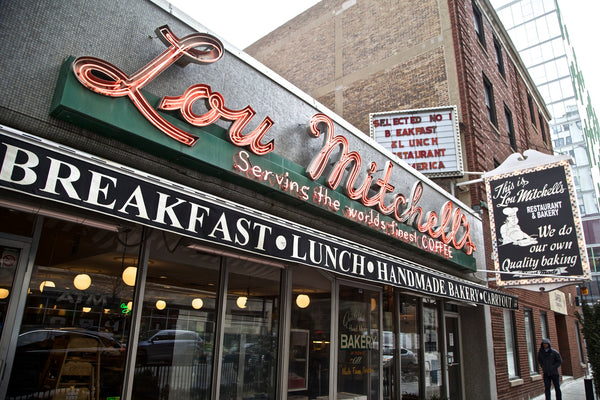
Day 2: Illinois to Missouri
Embark on your way to St. Louis , passing Staunton and the famous Henry's Rabbit Ranch and the Route 66 Emporium. Head to the Chain of Rocks Bridge , the famous 1.5 km-long bridge that bridged the Mississippi River for decades before it was closed to traffic. It's worth taking a detour to cross the bridge, now open to cyclists and pedestrians. 🚶
Now that you're officially in Missouri , head to St. Louis and grab lunch at Eat Rite Diner before heading to the iconic Gateway Arch . End your day in Sullivan where you will find the famous Meramec Caverns . These caverns were formed from limestone deposits eroded over the years, with artifacts dating back to pre-Columbian Native Americans . Meramec Caverns is famous for being one of the most visited caves in Missouri and a top destination for those arriving in the state via Route 66.
- Major attractions : Meramec Caverns, Chain of Rocks Bridge.

Day 3: Missouri to Kansas
From the caverns, continue along Route 66 to the town of Cuba , also known as the " Route 66 Mural City " for its vivid paintings that tell the story of the city's incredible and rich history. Enjoy breakfast at Shelly's Route 66 Cafe in Cuba before heading to the town of Rolla.
In Rolla , check out takeout at Mule Trading Post, a popular gift shop that's been open since 1957, and Totem Pole Trading Post , another gift and snack shop that's been around since 1933. Continue down Devil's Elbow and over the Devil Elbow Bridge, to Waynesville and the Trail of Tears. Head down the highway and spend some time in Springfield , Missouri, where you'll find plenty of Route 66-era memorabilia with neon signs, billboards, the 1926 Gilloz Theater and the Museum of the Route 66 automobile . 🚗
Finally, end your day in Kansas . Although Route 66 only covers 13 miles of the state, take a break at " Cars on the Route " in Galena and grab a bite to eat at "Angel's on the Route" in Baxter Springs. Both were original Kan-O-Tex gas stations — the roadside diners, gift shops and gas stations — that served many families during the Route 66 era.
- Major Attractions : Cars on the Route, Totem Pole Trading Post
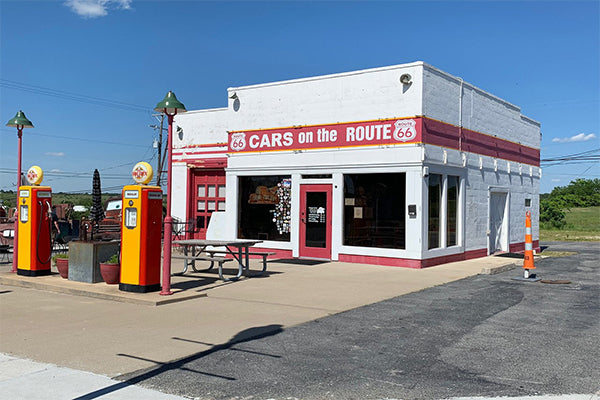
Day 4: Kansas to Oklahoma
Leaving Kansas , you will enter Oklahoma, which is rich in history and contains 400 miles of Route 66. Oklahoma is the state that straddles the Midwest and South. It is also the home of Cyrus Avery , the "father of Route 66", who created the entire route and promoted it during his lifetime. You will then pass through Claremore . For fans of American actor and cowboy Will Rogers , you will find many sites here such as his memorial museum and the statue related to "Oklahoma's Favorite Son".
Continue to Catoosa . Don't forget to make a stop at the iconic Blue Whale , 🐳 one of Route 66's most famous attractions. Enjoy lunch at Clanton's Cafe, the oldest family restaurant on Route 66 (approximately since 1927), before to head to the diverse city of Tulsa.
Once in the city of Tulsa , you will find many of the remains of Route 66 preserved in the city. Explore the remarkable architecture of 1930s Art Deco buildings and iconic Route 66 locations such as the 1925 Blue Dome gas station, the 1916 Cyrus Avery Bridge, and the Historic Route 66 Village. End your evening with dinner at El Rancho Grande and a concert at Cain's Ballroom. End the evening at the Desert Hills Motel, which dates back to 1953 (its neon signs are still intact!).
- Main attraction : Blue Whale

Day 5: Tulsa, Oklahoma to Oklahoma City
Depart early from Tulsa through Oklahoma and get off at Sapulpa . Stop by the historic Frankoma Pottery (selling handmade pottery since 1933), the Rock Creek Bridge and the former Teepee Drive-In Theater. Enjoy a burger at Happy Burger before leaving Sapulpa. 🍔
Pass the Seaba Station Motorcycle Museum, a motorcycle museum converted into a gas station in 1921 in Warwick, and head toward Arcadia. Take a look at the Oklahoma County 66 Auto Trim and Mini Museum , an artistic collection of replicas of many classic Route 66 icons like the Wigwam Motel and the Blue Whale of Catoosa. En route to Oklahoma City, make a stop at Pops , a neo-modern gas station and soda gem. Spend the rest of your day exploring the city's many historical museums and highlights.
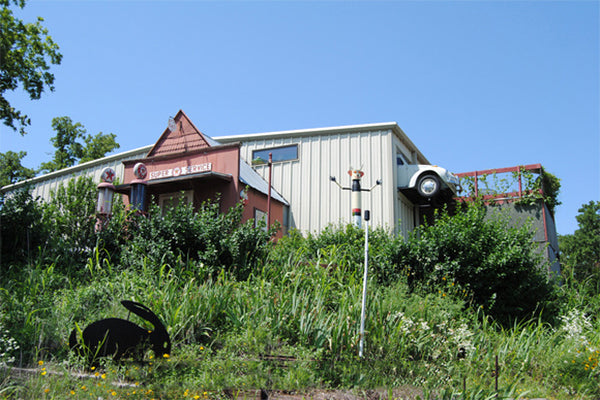
Day 6: Oklahoma City to Texas
From Oklahoma City , drive on an empty stomach to El Reno , a town known for its American food and Route 66 restaurants. It's home to the original onion burger , born of the Depression. Grab a classic bite at the oldest burger restaurant, Robert's Grill, serving onion burgers since 1926. Then, slowly drive to Clinton and visit the Oklahoma Route 66 Museum. Don't forget to stop at the Mohawk Lodge Indian Store. This store dates from the late 19th century and offers some of the most authentic Native American products in the country. Dine at the historic 1925 Clinton Country Club Restaurant in White Dog Hill . 🌭
End your Oklahoma trip in Elk City, home to the National Route 66 Museum Complex . You will find all the necessary information on Route 66, from its route to its history, including the states it crosses. Bid farewell to Oklahoma once again with a trip to Pony Bridge, made famous in the 1939 film " The Grapes of Wrath. " To end the day, head to the Texas state line and visit Shamrock's Tower Station and the U-Drop Inn, a marvel of Depression-era art. Continue and enjoy your evening resting in Amarillo .
- Major Attractions : Route 66 Museum, Pony Bridge, U-Drop Inn
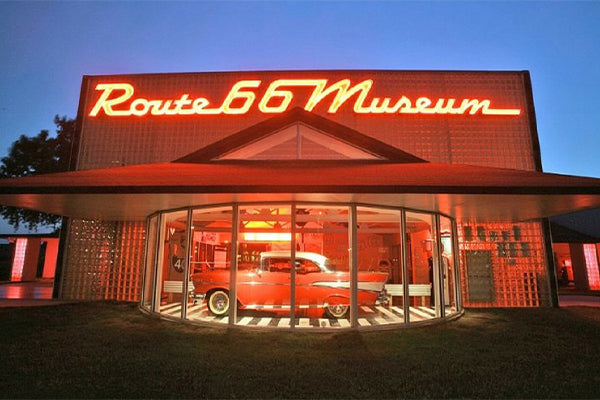
Day 7: Texas to New Mexico
Start your day by exploring Amarillo , the largest city in the Texas region. Take a trip to the Cadillac Ranch , an art installation made up of 10 half-buried Cadillacs in the Texas desert. Step back in time to the classic days of Route 66 on 6th Street. The neighborhood spans thirteen blocks along 6th Street in the San Jacinto Heights neighborhood, between Georgia and Forrest avenues. It was developed in the 1900s as a streetcar suburb and became a road as part of the Ozark trail highway system in 1921. Here you will find many vintage gas stations and architectural buildings from the 1920s to 1940s that line the streets, including shops, boutiques, and the Ranchotel Historic Motel. 🛏️
From Amarillo, head down to the town of Vega and see the restored 1920s Magnolia Gas Station and Dot's Mini Museum , which includes many individual artifacts from the Route 66 era. Jump into your next New State -Mexico , the land of wonders.
Along the way, you'll find yourself in Tucumcari , a town that remains true to the spirit of Route 66. The town is known for its 2,000 motels. Spend your night among the many historic Route 66 motels , such as the Blue Swallow, Motel Safari, and Pow Wow Inn, all featuring iconic Route 66 neon signs . Don't wait until the end of the evening to visit the 1930s Art Deco theater, the Odéon, and see what's going on there!
- Major Attraction : Cadillac Ranch

Day 8: From Tucumcari (New Mexico) to Albuquerque (New Mexico)
Head to Santa Rosa and dine at Route 66 Restaurant before taking the pre-1937 road through Santa Fe from Santa Rosa. Traverse the landscape north of Romeroville and head toward the state capital of Santa Fe . The city is best known for its art, with an abundance of museums, galleries and street art. Discover the famous La Fonda Hotel , Museum Hill and the galleries that line Canyon Road.
Hit the road again to find yourself in Albuquerque , the longest stretch of Route 66. Drive down historic Old Town , the Sandia Peak Tramway, Tingley Beach and the Albuquerque Museum. Catch a movie at the KiMo Theater and spend the night at Enchanted Trails RV Park and Trading Post in a vintage trailer from the 1950s or 1960s.
- Major attraction : La Fonda Hotel, Tingley Beach
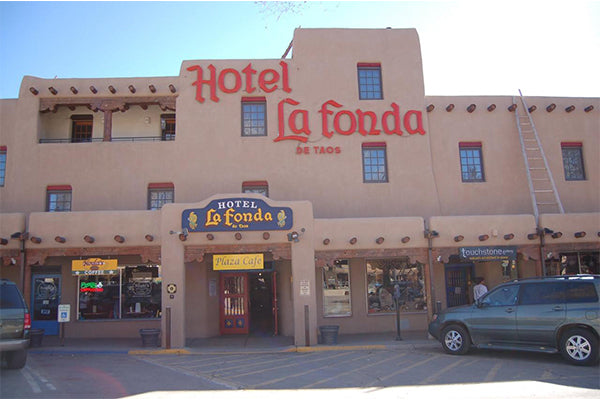
Day 9: New Mexico to Arizona
Travel to Acoma Pueblo, the oldest inhabited community in North America since 1150. This is where the Acoma Pueblo tribe lives. The view across the plains is breathtaking, especially if you can catch the sunrise atop the Mesa. From the Pueblo , passing through Cubero, visit the Villa De Cubero Trading Post stocked with groceries and general supplies. Make one final stop on the stretch from New Mexico to Gallup. You'll want to visit the Rex Museum, a former hotel and brothel from 1900, the El Morro Theater, the El Rancho Hotel, and the former McKinley County Courthouse which contains several murals from the New Deal era.
Head to the town of Lupton, Arizona , and be sure to stop at the Yellowhorse Trading Post , run by a Navajo family who began selling rugs along Route 66 in the 1950s. town of Chambers and visit the Painted Desert and Petrified Forest National Park. This park is a landmark of Native American culture, where you will find Native American ruins and petroglyphs. Hike the many trails that run along the park before heading to the neighboring town of Holbrook. The town has many historic buildings, including the Bucket of Blood Saloon and the old Navajo County Courthouse. Explore the courthouse's many original artifacts and local history of Navajo culture before finding rest at the famous Wigwam Motel . The motel has seen visitors sleeping in concrete teepees since 1950!
- Major attraction : Wigwam Motel .
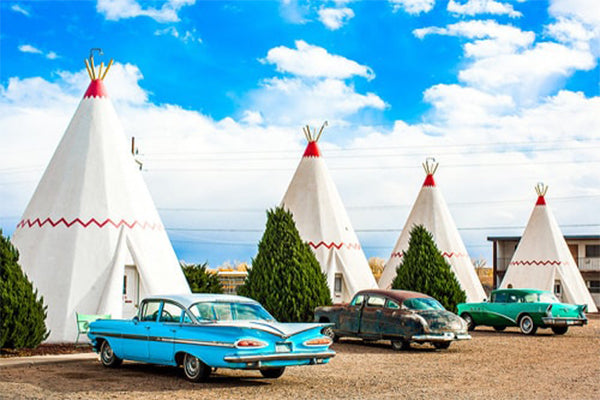
Day 10: Holbrook, Arizona to Flagstaff, Arizona
Dine at Joe & Aggie's Cafe in Holbrook and continue to Winslow. Around town, you'll find many vintage Route 66 gas stations , signs, and cafes. Find time to visit the La Posada Hotel, the former 1928 Harvey House Hotel , and the Lorenzo Hubbell Trading Post and Warehouse which was built in 1917 by the Navajos. Eat at E & O Kitchen before heading to Flagstaff , Arizona's largest city on Route 66.
The city is comfortably located between mountains and forests. Many buildings from the 19th century and Route 66 era still exist in the downtown historic district. Be sure to visit the Lowell Observatory 🔭 built in 1894, the Riordan Mansion State Historic Park and the Sunset Crater Volcano National Museum. Dine at the Grand Canyon Cafe, a Route 66-era restaurant open since 1942 before staying at the historic 1897 Weatherford Hotel .
- Major attraction : Lowell Observatory
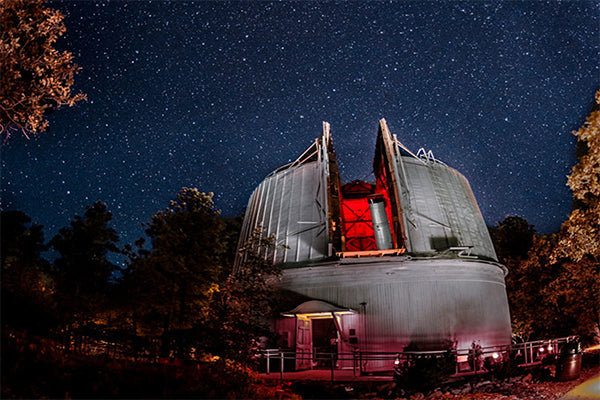
Day 11: Flagstaff, Arizona to Kingman, Arizona
Grab breakfast at Miz Zips and head to William , a popular spot if you want to take a detour to see the Grand Canyon National Park on Route 66. Alternatively, explore William and Pete's Route 66 Gas Station Museum , which is beautifully restored . Spend some time touring the historic district and checking out the former Frey Marcos Hotel and the Sultana Theater.
Lunch in Seligman at Angel's Delgadillo's Snow Cap Drive-In. Take some time to get off the road and wander around the gift shops and old Cottage Hotel before settling into Kingman . Spend some time visiting the Arizona Route 77 Museum, a former power plant that served the city between 1907 and 1911. Find steam engines 🚂 at Locomotive Park and many hidden Route 66 gems along city streets. Take a break at Mr. D'z Route 66 Diner before ending the night at El Trovatore .
- Major Attraction : Pete's Route 66 Gas Station Museum
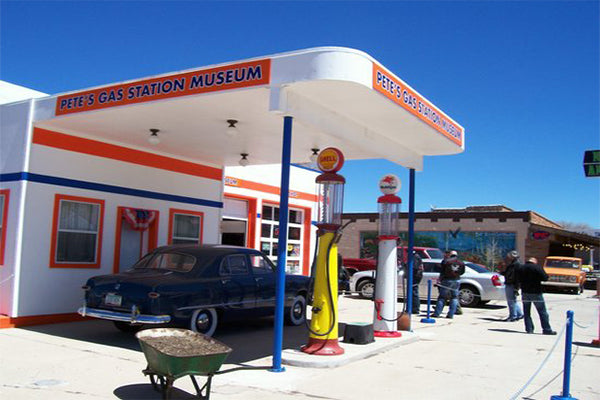
Day 12: From Arizona to California
Eat at Ma and Pa's Hot Rod Cafe in Kingman before leaving Arizona , where you'll spend the day exploring the longest section of Route 66. This part of the route passes old mining towns and ghost towns of the he era of Route 66. Be especially careful on this section due to its winding roads and junctions. After a scenic drive, you'll travel to Oatman , a former gold mining town from the 1920s. Spend the afternoon seeing live Old West shows and finding live burros on the streets before Proceed to the Oatman Hotel Restaurant and Saloon for lunch. 🥪
Say goodbye to Arizona as you cross the border into California, the last state you'll travel to on Route 66 . Soon you will find yourself in the town of Needles. You'll find plenty of Route 66-era businesses here, like vintage motels, a train depot, and a gigantic Borax wagon . End your evening with dinner at the Wagon Wheel Restaurant, while enjoying live music before bed at the Route 66-era Motor Inn Imperial 400 .
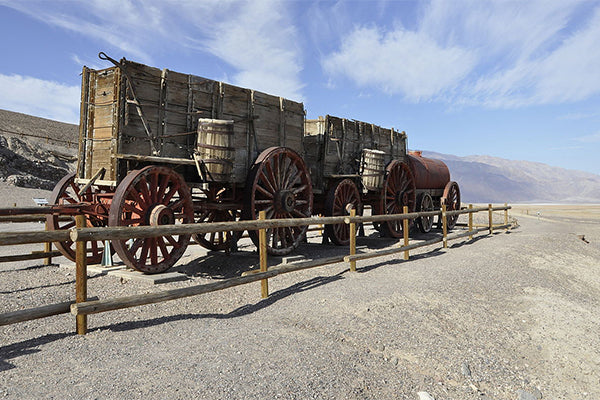
Day 13: Needles, California to Barstow, California
Take an early morning detour to Joshua Tree National Park and enjoy breakfast at Crossroads Cafe. From there, take a drive through the park and if you're an adventurous heart, try some of the many hikes the park has to offer. Once you're done, take the road to the town of Barstow.
Barstow is a town worth exploring, where you'll find plenty of neon signs and Route 66 murals. Lunch at Rosita, a Mexican restaurant dating back to 1954. Find a huge collection of automobile signs at Tom's Certified Welding and Machine Shop, visit the Route 66 Mother Road Museum and a former railroad depot dating from 1911, now known as Casa del Desierto. End the night at DiNapoli's Fire House Restaurant and rest at the Route 66 Motel before heading out on the final leg of your trip.
- Major attraction : Elmer's Bottle Tree Ranch 🍾
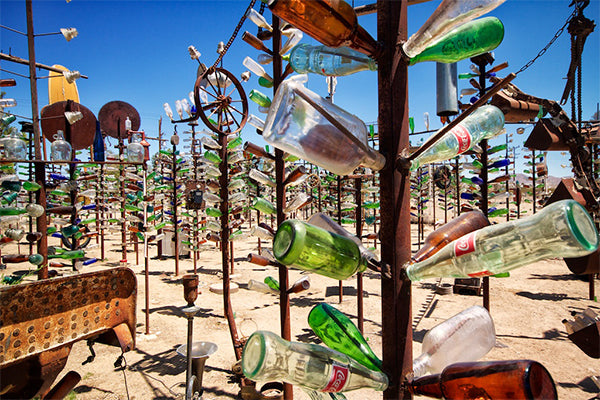
Day 14: Barstow (California) to Los Angeles (California)
After two weeks of dusty roads, you are at the end of the journey . The final stretch of Route 66 is all about timing. Los Angeles is known for its traffic, so it is recommended to arrive at the Santa Monica Pier by early afternoon at the latest.
Have one last breakfast on Route 66 at Roy's Cafe in Barstow before heading to Rancho Cucamonga . Make a quick stop at the local history museum that was once the Cucamonga gas station in 1915. Before hitting the road again, grab a quick bite to eat at the Sycamore Inn , one of the oldest restaurants on Route 66 , dating back to 1848.
Head to Pasadena where you'll find the Colorado Street Bridge and an old 19th-century mill. If you have time, explore the Gamble House, a Craftsman-style home built for the wealthy Gamble family in 1908. Don't miss a meal at Fair Oaks Pharmacy , before heading to Los Angeles.
Passing through Los Angeles, you will find yourself in the neighborhoods of Highland Park, Echo Park, Hollywood and Beverly Hills. Leave some time to spot the 1924 Highland Theater and views of the Hollywood sign . Now head slowly toward the end of Route 66. The original 1926 terminus was at the intersection of 7th Street and Broadway. Today, it has been moved to the intersection of Lincoln Boulevard and Olympic Boulevard in Santa Monica . Head to the famous beach, then walk to the pier before soaking up the west coast waters. You succeeded ! 🎉

Conclusion
Route 66 was established in 1926 as a network of local roads as part of the United States Highway System . Most of the roads created during this era were not paved, but only made of wooden planks on sand plains. Over time, the federal highway system improved . In the late 1930s, the original 1926 alignment was widened and the paths were paved. The government carried out realignments in 1937 (after World War II) and again in 1952. Some of these alignments exist today, while others were closed due to unsafe roads and closures .
Please note that all routes mentioned in this article are passable/in service . The dates refer to when the route was officially used as part of Route 66 . Routes may be open or closed at any time, so be sure to check before you travel.
Once the nation's thoroughfare , Route 66 brought stability and a new way of life to Americans in the 1930s. Over the years, as new routes became urbanized, Route 66 slowly became lost in the the country's growing infrastructure. Regardless, Route 66 is still a meaningful road for the American people. 🗽



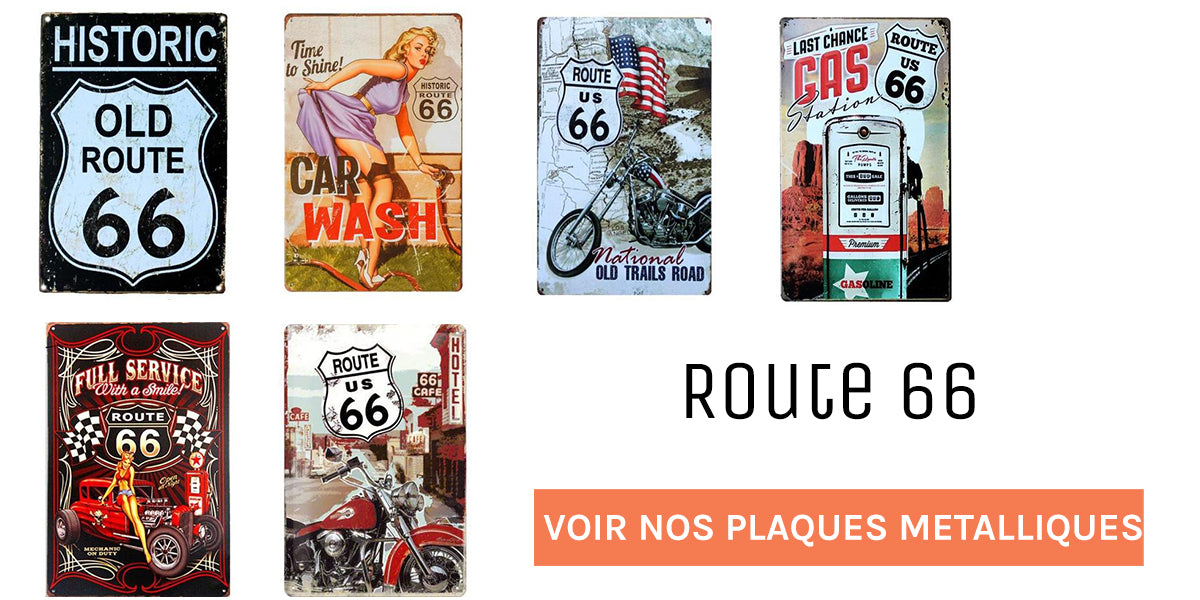
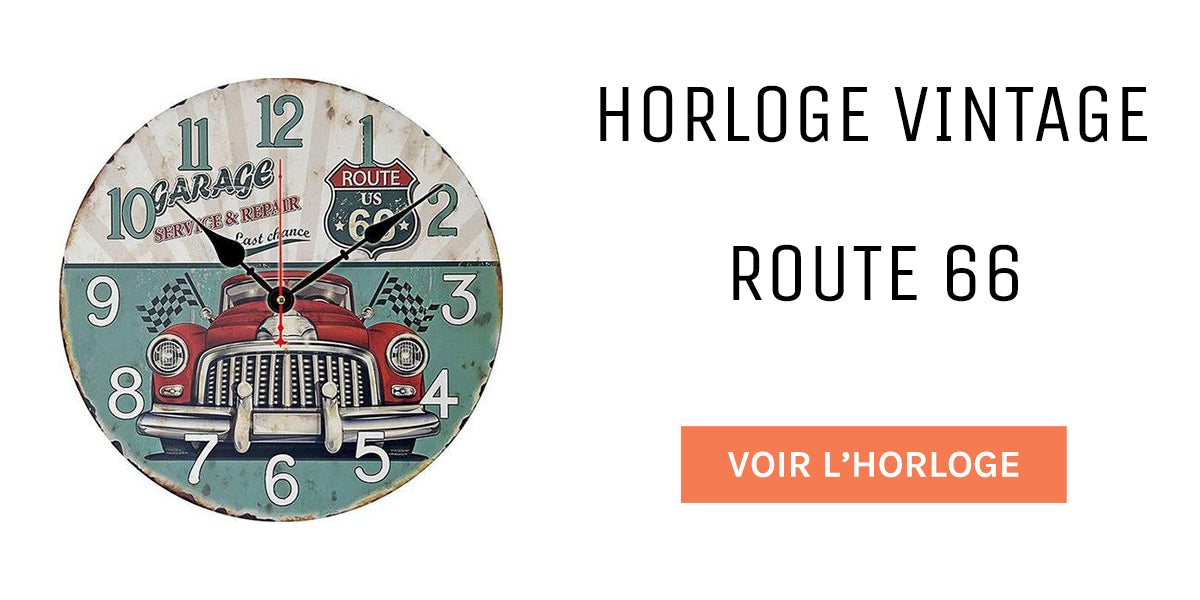






Leave a comment